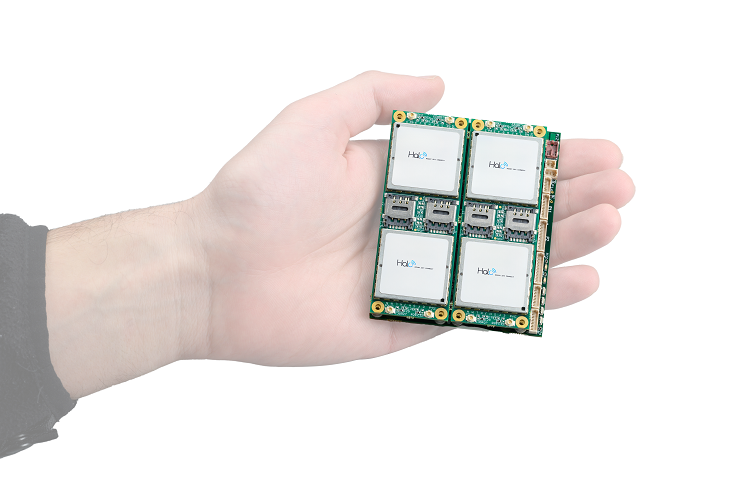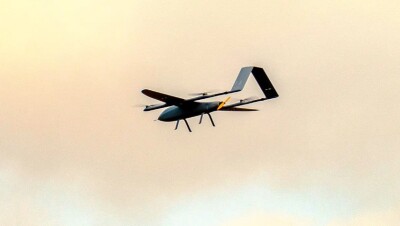Beyond Visual Line of Sight (BVLOS) operations are rapidly becoming the vision of unmanned aerial vehicles (UAVs) or drones to maximize their potential and effectiveness. However, as drones venture beyond the operator's visual range, ensuring consistent and uninterrupted connectivity becomes crucial for mitigating risks associated with communication failures, a significant hurdle to widespread adoption.
A Singular Cellular Network Does Not Guarantee 100% Communication Uptime
Although widely available, cellular networks are not infallible. They were never designed to offer 100% uptime, especially for critical operations like BVLOS drone flights. Network congestion, coverage gaps, and environmental conditions can all lead to service disruptions. Moreover, cellular coverage is often inconsistent in rural or remote areas, and even in areas with a solid cellular presence, 100% uptime is never guaranteed. Relying solely on a singular cellular network for BVLOS operations is a risk that operators cannot afford to take.
Satellite Communications Are Expensive and Slow
Satellite communications offer a broader coverage area and are less susceptible to the limitations of terrestrial networks. However, the cost of satellite connectivity can be prohibitively high, especially for continuous data transmission required by BVLOS drones. High latency, the delay in data transmission, is another significant drawback of satellite communication, making it less suitable for applications requiring real-time video streaming. The high latency and costs make it impractical for many BVLOS applications as the primary method for ensuring connectivity.
Satellite communications are also less relevant for use by first responders (DFR) dealing with crisis management in urban or industrial areas in which buildings block the sky view.
Point-to-Point (SDR) and WiFi Communications Are Limited
Point-to-point communication offers a direct communication link between two points, providing a reliable connection within a range of two specific points. However, PTP systems depend on line-of-sight (LOS) conditions, which restricts their effectiveness in environments with obstacles or varying terrain. The limited communication range is inadequate for the long distances that BVLOS operations typically require. Additionally, PTP systems are susceptible to interference and jamming, which can severely disrupt the connection, posing significant risks during critical missions.
WiFi networks, widely accessible and useful for short-range communication, also present several disadvantages when applied to BVLOS drone operations. WiFi networks are generally designed for limited coverage areas, making them unfit for the extended ranges required in BVLOS flights. Furthermore, physical barriers such as buildings or trees can easily obstruct WiFi signals, leading to potential signal drops and connectivity issues. The susceptibility of WiFi to interference from other wireless devices and networks also poses a challenge, especially in densely populated or electronically noisy environments.
Redundancy: A Lifeline for BVLOS Operations
BVLOS drone connectivity requires robust, secure, and redundant communication paths to mitigate the risks of compromised connectivity. Relying on a single communication channel is not a viable solution—a single point of failure in the communication chain can result in losing control of the drone, jeopardizing safety, or mission failure. Even brief communication lapses due to high latency or slow failover can cause drone malfunction. The key to robust and redundant connectivity is integrating multiple communication channels, guaranteeing that when one communication link fails, others can take over and maintain the drone-operator connectivity.
The Aggregated Multilink Communication Model
In an aggregated multilink communication model, a drone uses multiple different radio types and spectrums that enhance resilience against interference and coverage gaps. It may have public, commercial networks like Verizon, AT&T, and T-Mobile, satellite communication, a private 5G network, WIFI, or a point-to-point or mesh network connection. Emerging technologies like LTE and 5G over satellite can also expand the range of available communication paths.
The multilink model aggregates the communication channels into a single, cohesive communication pipe, leveraging each channel's strengths while mitigating its weaknesses. The aggregated pipe allows drones to leverage the best connectivity channels at any given moment, creating more resilient and redundant transmission and ensuring continuous connectivity, even in harsh conditions.
The versatile nature of multilink communication efficiently supports various data stream distribution models across different paths. For instance, C2 traffic, which is the most critical traffic and requires low bandwidth, can be duplicated across all communication paths, while video, which is typically less critical and bandwidth intensive, can be split across the different paths, reducing the risk of data loss and resulting in high availability, and an additional layer of security.
Logical Layer of Connectivity - Soft Handoff Between Networks
The logical connectivity layer is a virtual communication channel aggregating multiple physical connections into a single logical layer, making them appear as one pipe. This pipe prevents disconnects at the application level by managing failures internally, dynamically steering traffic between available paths whenever a specific communication path fails or experiences reduced performance. This process, known as a soft handoff, ensures real-time, smooth handoffs between networks as conditions change, maintaining drone control and uninterrupted video feeds during BVLOS missions. With soft handoff, data, telemetry, or a video stream that starts from a public network can seamlessly be handed off to a private network such as WIFI or PTP.
The logical layer remains entirely transparent to the application while applying multiple distribution models or policies. Traffic can duplicate, split, or maintain priority across various paths using different internal VPNs for different application sets. Critical C2 traffic, for example, can be duplicated across all communication paths to ensure uninterrupted control and de-duplicated at the GCS (Ground Control Center). Traffic steering happens automatically and seamlessly when one communication path fails or downgrades.
Video data can be split across the communication paths for a more robust and secure transition. The splitting mechanism must monitor packet loss, congestion levels, and half-round times in real-time for optimal distribution among the various links. This real-time feedback guides a dynamic redirect and rebalance of traffic across communication paths.
Data Streams Prioritization
Not all data streams are created equal in drone operations. For example, prioritizing critical command and control (C2) data over less critical data streams, such as video feeds, is critical for maintaining drone control. The multilink communication model incorporates data stream prioritization, transmitting essential data through the most reliable paths with the highest redundancy.
By prioritizing C2 data, operators can ensure that the drone remains under control, even during network failures. This prioritization also allows for more efficient use of the available bandwidth, directing less critical data to secondary paths while preserving the most reliable channels for crucial information.
Predictive Planning with Signal Coverage Mapping
Predictive planning is another critical component of ensuring reliable BVLOS drone operations. By using signal coverage mapping, operators can predict where communication gaps might occur and plan their missions accordingly. Signal coverage mapping involves analyzing different communication networks' signal strength and coverage across the intended flight path.
Drone mapping of signal strength in various communication channels along the intended flight path helps drone operators identify potential dead zones and plan optimal routes to ensure mission connectivity, reliability, and, most importantly safety.
Introducing Elsight's Halo – Absolute Connection Confidence for Drones
Elsight's Halo is a cutting-edge multilink connectivity solution designed for BVLOS missions. Halo seamlessly aggregates multiple communication channels into a robust and redundant connectivity pipe, providing drones with absolute connection confidence, even in the most challenging and unpredictable environments. Elsight's Halo BVLOS connectivity solution delivers:
- Multilink technology aggregates multiple networks across various technologies and RF spectrums to bridge communication gaps.
- Built-in redundancy leverages a virtual connectivity layer for seamless handoffs between different networks, maintaining drone connectivity at all times.
- Real-time feedback about cellular channels' health for dynamic steering and rebalancing of traffic across the communication paths.
- Flexible data stream policies, including real-time data splitting and traffic duplication across multiple paths, as well as critical data prioritization.
- Secure data transmission with the use of M-TLS for channel encryption and AES-256 for dispersed datagrams encryption, Elsight provides the most secure Datapath practically eliminating chances of MITM and/or DDOS attacks.
- Automatic signal heat mapping of all cellular carriers in an operating area supports planning the most effective flight paths.
- Compact design and minimal SWaP (Size, Weight, and Power) guarantees compatibility with a wide range of commercial and military UAV platforms.
- FAA Part 107 certification and network and broadcast Remote ID compliance
Halo's robust, redundant, and intelligent communication solution offers drone operators the confidence to push the boundaries of BVLOS operations.
The redundancy puzzle for BVLOS drones is a complex challenge that requires a multifaceted solution. Singular communication methods—whether cellular or satellite—have limitations. However, by adopting a multilink communication model with a logical connectivity layer, flexible transmission policies, and predictive planning, drone operators can achieve the certainty required for safe and reliable BVLOS operations.
About the Author: Roee Kashi is the Co-founder and CTO of Elsight.
















Comments